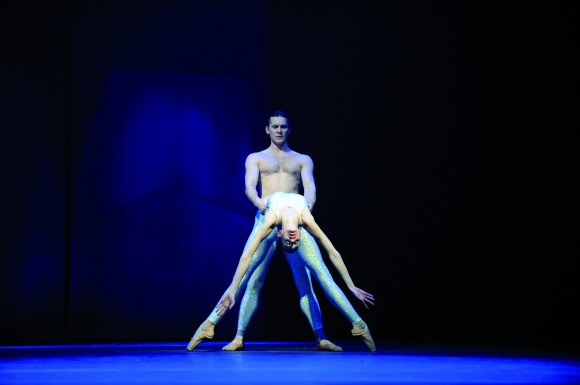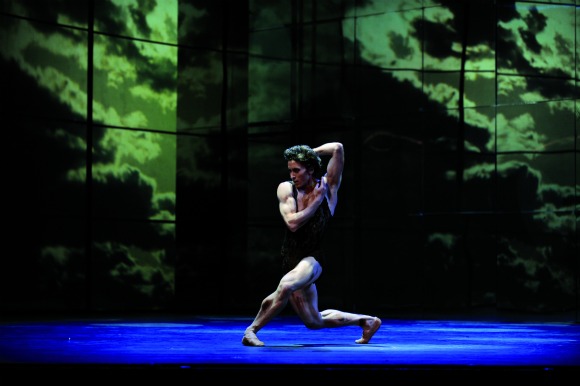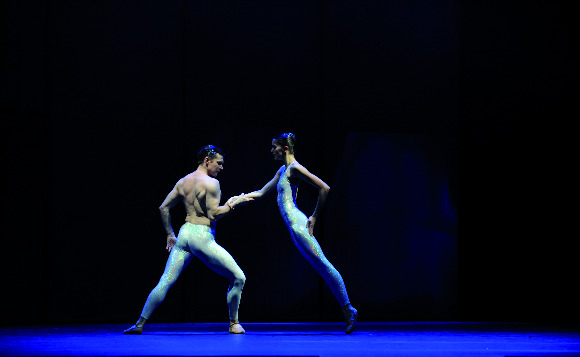As a European tradition, the summer solstice has a mystical meaning. It’s been said that the faries in the forests gain some strength in power and something mysterious may happen.
Zurich Ballet is said to be “the most beautiful company of ballet dancers in Europe.” One of the very popular performances with a long run is “A Midsummer Night’s Dream.” In the night of the summer solstice, small forest fairies prance around.
When Mendelssohn was 17 years old, he was inspired by this story by Shakespeare, when he read it, and he finished composing a prelude of dazzling fantasy world of forests in no time. Later, he was asked to compose a music to accompany the play “A Midsummer Night’s Dream” by King Wilhelm IV of Prussia, who was deeply impressed with the performance of this prelude. It was when Mendelssohn was in his mid 30s. While he composed all the rest of the pieces following the prelude, the degree of perfection of the prelude created by a teen-age geneous was so high level that it is said that it made a total differnce from the other 12 pieces created during his mature stage of life.
Flute, oboe, clarinet, horn… Seduced by the sound of the forests coming from these instruments, as if suggesting the mysteries that were about to happen, we entered into the world of dreams.
The stage design was implemented by Hans Schavernoch, continuing to be successful around the world, while the magic of the lighting was created by Jürgen Hoffman. Their sophisticated taste and depth of understanding were outstanding.
What impressed me most was the idea that a huge mirror set on the whole stage reflected all the seats of the opera house as they were.
When we were welcomed to our seats, the forest had already been there, and the moving silhouettes of the audience just looked like the beasts moving slowly inside the mirror.
Zurich Opera House has dignified baroque style seats, gold and blue painting on the ceiling and big beautiful chandeliers. It was a horseshoe style, with the angel-sculptured pillars and images of gods cruising around the 3-layer balconies. The art director, Schavernoch, created a mystic forest by making this highly decorative uneven space to be reflected in the black glass, capturing the depth as was, from precisely the opposite perspective.
The seats were totally blanketed in this trick of perspective. We were taken to the deep dense forest, or dimly-lit rock caves where fairies and beasts were sleeping.
The fairy Puck, suddenly jumped on to the stage, was played by an agile soloist, Arman Grigoryan. Although his elevation on his jumps and softness and stillness of landing were almost superhuman, the fairy Grigoryan carried a sense of urgency in his movements as if he always had some wicked plot in his mind. We all were drawn to his eerie existence.Classic vs. modern and in the midst of enriched performing elements, the audience was also held captive under the of Puck.
When he made the lovers into different characters by applying aphrodisiacs, he must have sprayed that glittering countless powders into the audience, staring at us with his big eyes, as a matter of fact. Oberon, the king of fairies, was performed by
Stanislav Jermakov, while his wife, Titania, the queen of fairies, was performed by Sarah-Jane Brodbeck. Her long limbs, which must have been given solely for ballet, were specially stretched drawing a lean perpendicular line in an elegant attitude, followed by the forest fairies. Chinese Yen Han played Hermia. She is one of the most popular dancers in the Zurich Ballet and attracts many enthusiastic fans.
Although she looked rather small, he was a wonderful soloist with her dainty and delicate dance.
Vahe Martirosyan played Hermia’s lover,Lysander, while Hermia’s friend, Helena, was played by Galina Mihaylova. Although finally he would be married to Helena, the bride, , that Hermia’s father decided, was performed by Mehrabyan.
The story of “A Midsummer Night’s Dream” is very famous with happy endings for all the characters. The humors of the incidents of taking wrong partners under the magic spell cast by Puck were shown in the 2nd act.
Director and choreographer, Heinz Sperli, said he was fascinated by the relationships and fates among people, and the fun aspect of exchanging lovers.
“In this piece of work, I am very interested in specific descriptions of characters, and their changes in consequence. Especially most enchanting is the structure that enabled to demonstrate various themes of love. The modernity of ‘A Midsummer Night’s Dream’ is, from my viewpoint, the incidents happening in a very small world.The fact that lovers can be exchangeable, and the variation of such partner change is the most fun and interesting aspect.”
That may also apply to the theme of encounters or departures expressed in Bach’s “The Goldberg Variations.” What will happen if you change your partner? said that it was an expression of love for him that Shakespere threw into the modern society.
Indiscretion, confusion, twist and illusion of love. With Sperli’s magic, confrontations or contradictions among people are spread from inside the ballet to the ouside and asking us what they are.
We were in the forest close to 3 hours including the intermission. At the finale, when the first prelude was circulated and while listening to the fairies’ singings, we came out of the dream after all.
Photo: Opernhaus Zürich © Peter Schnetz



